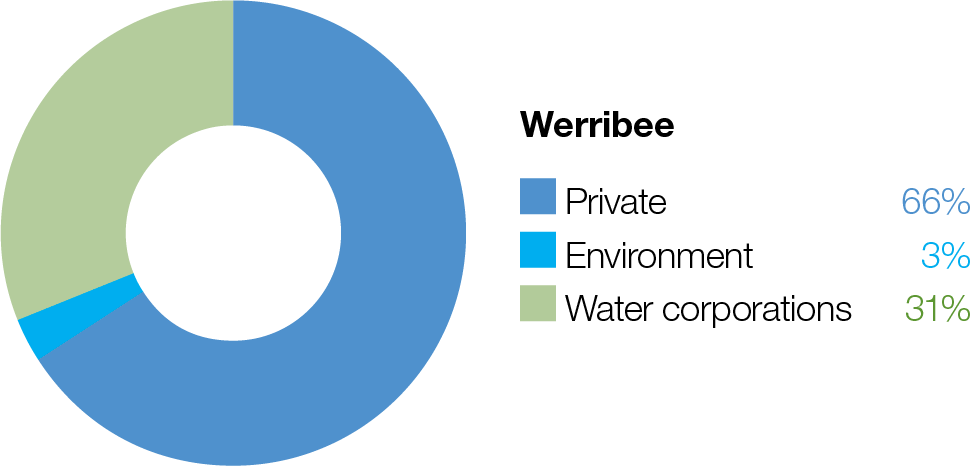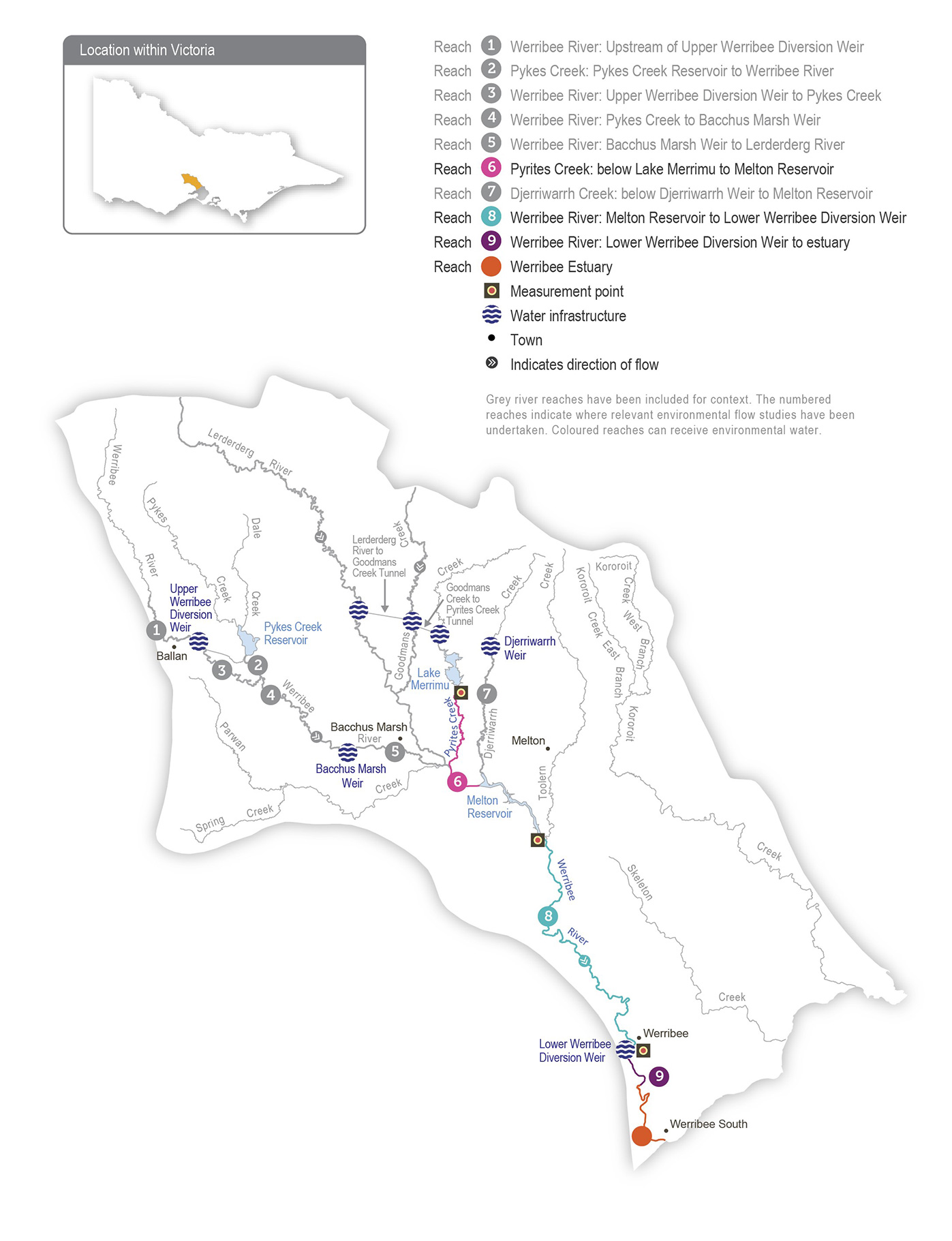Melbourne Water is working with the Registered Aboriginal Parties within the Werribee system – the Wadawurrung Traditional Owners Aboriginal Corporation, the Wurundjeri Woi Wurrung Cultural Heritage Aboriginal Corporation and the Bunurong Land Council Aboriginal Corporation – to strengthen relationships and increase Traditional Owners’ involvement in the planning and delivery of water for the environment. As of June 2023, an overarching partnership agreement was near completion between Melbourne Water and Wadawurrung Traditional Owners Aboriginal Corporation to frame relations and obligations between the organisations. Melbourne Water was also in discussions with Wurundjeri Woi Wurrung Cultural Heritage Aboriginal Corporation and the Bunurong Land Council Aboriginal Corporation to work towards developing a similar partnership agreement. The intent is for Traditional Owners to be active partners in the planning, delivering and monitoring water for the environment associated with Wirribi Yaluk/Weariby Yallok (Werribee River).
All three Registered Aboriginal Parties in the Werribee system were involved in the upper Wirribi Yaluk/Weariby Yallok (Werribee River) environmental flows study, completed in 2022-23.
The Bunurong Land Council Aboriginal Corporation is working with Bunurong people to determine the cultural objectives for Weariby Yallok (Werribee River) on Bunurong Country. There are concerns about low flow in the lower reaches and that fish of cultural importance to the Bunurong are not supported by the flow and are restricted in movement. This concern may be partially addressed through the implementation of Action 8-10 in the Central and Gippsland Region Sustainable Water Strategy, which aims to improve fish passage and the delivery of water for the environment to the lower Weariby Yallok (Werribee River) on Bunurong Country.
The Wadawurrung Traditional Owners Aboriginal Corporation has reviewed the environmental values of the Wirribi Yaluk (Werribee River) system. It has identified environmental values that also have cultural significance to Wadawurrung Traditional Owners, which the table below shows. However, further work is required to understand how potential environmental watering actions can improve these cultural values.




